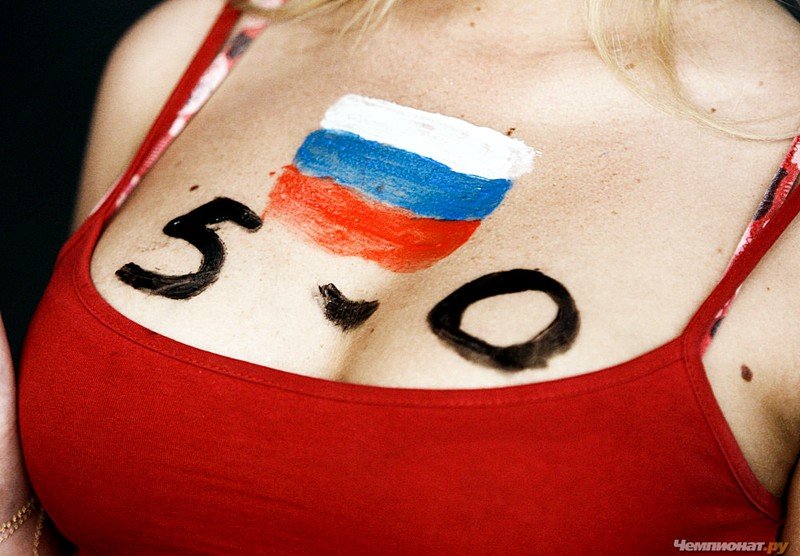|
|
Russia Defeated The Netherlands, European Championship 2008
|
1960s and 1970s saw a greater variety of artistic styles in the Soviet cinema. Eldar Ryazanov's and Leonid Gaidai's comedies of that time were immensely popular, with many of the catch phrases still in use today. In 1961–68 Sergey Bondarchuk directed an Oscar-winning film adaptation of Leo Tolstoy's epic War and Peace, which was the most expensive film ever made. In 1969, Vladimir Motyl's White Sun of the Desert was released, a very popular film in a genre of ostern; the film is traditionally watched by cosmonauts before any trip into space.
Russian animation dates back to the late Russian Empire times. During Soviet era, Soyuzmultfilm studio was the largest animation producer. Soviet animators developed a great variety of pioneering techniques and aesthetic styles, with prominent directors including Ivan Ivanov-Vano, Fyodor Khitruk and Aleksandr Tatarsky. Many Soviet cartoon heroes, such as the Russian-style Winnie-the-Pooh, cute little Cheburashka, Wolf and Hare from Nu, Pogodi! are iconic images in Russia and many surrounding countries.
The late 1980s and 1990s were a period of crisis in Russian cinema and animation. Although Russian filmmakers became free to express themselves, state subsidies were drastically reduced, resulting in fewer films produced. The early years of the 21st century have brought increased viewership and subsequent prosperity to the industry on the back of the economic revival. Production levels are already higher than in Britain and Germany. Russia's total box-office revenue in 2007 was $565 million, up 37% from the previous year In 2002 the Russian Ark became the first feature film ever to be shot in a single take. The traditions of Soviet animation were developed recently by such directors as Aleksandr Petrov and studios like Melnitsa Animation.
Russia was among the first countries to introduce radio and television. While there were few channels in the Soviet time, in the past two decades many new state and private-owned radio stations and TV channels appeared. In 2005 a state-run English language Russia Today TV started broadcasting, and its Arabic version Rusiya Al-Yaum was launched in 2007.
|
|









